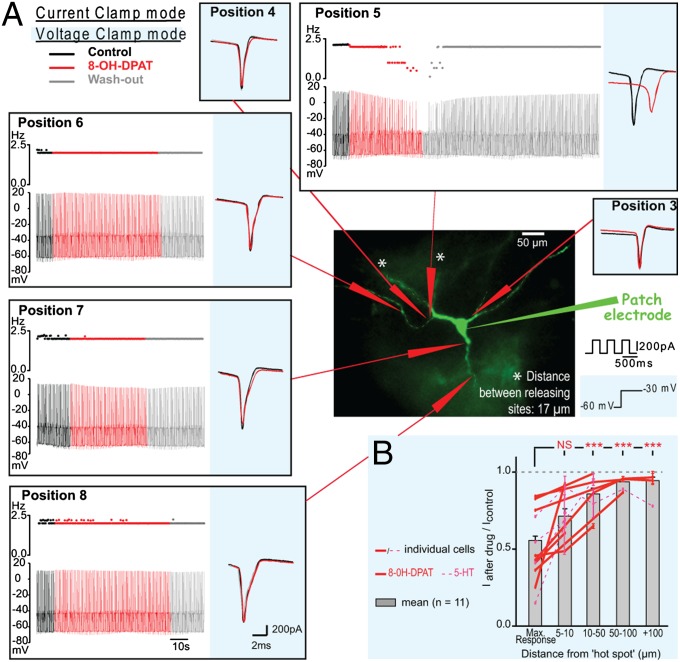Fig. 2.
Location-sensitive inhibition of MNs by 5-HT1A receptors. (A) I-clamp (white background) and V-clamp (blue background) recordings from a MN during application of 8-OH-DPAT (40 mM) at different spots on the membrane. The excitability was either tested by depolarizing current pulses (I-clamp; each pulse induced two spikes in control; black) or voltage pulses from −60 mV to −20 mV (V-clamp; each step induced a transient inward current). The release at various positions had no effect except at position 5, where there was a decrease in the excitability. The effects were reproduced at the end of the experiment by releasing the drug at position 5 once more. (B) Normalized amplitude of the reduction of the transient inward current as a function of the distance between the releasing site and the hot spot. Data points for individual cells are linked (8-OH-DPAT: red lines, n = 7; 5-HT: dashed pink lines, n = 4). The evoked inward currents were significantly reduced at the hot spot (normalized mean current amplitude: 0.56 ± 0.03) and 5–10 µm away (0.71 ± 0.05). The effect was significantly stronger when the drug was applied at the hot spot than when it was applied further than 10 µm away (0.91 ± 0.02, P < 0.0001, one-way ANOVA, n = 71 releasing sites, ***P < 0.0001, Tukey’s post hoc test).

